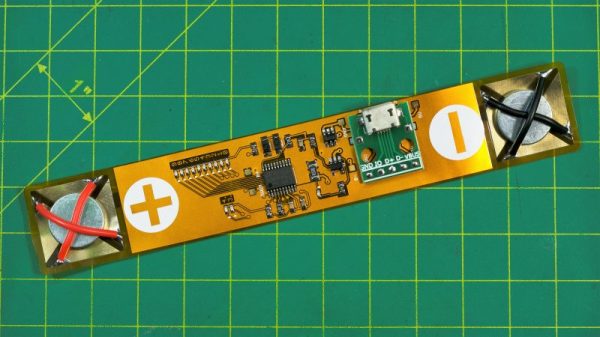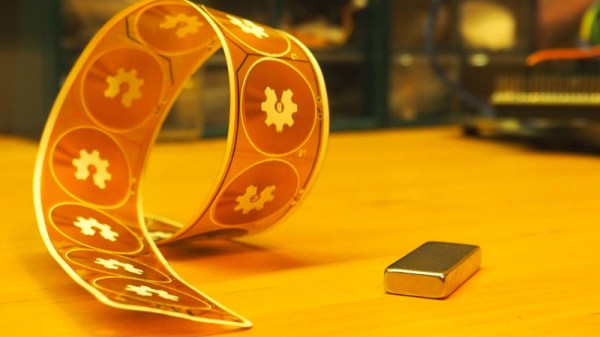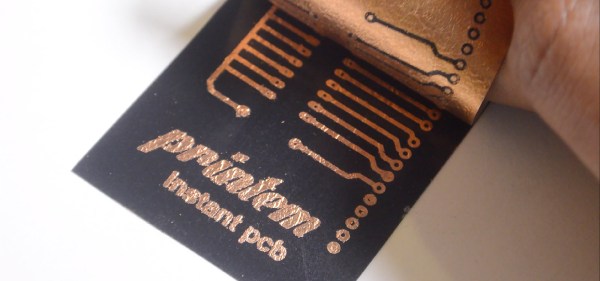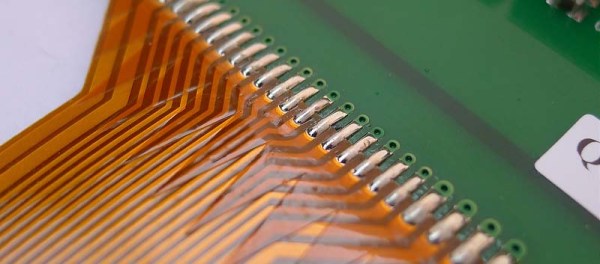Many hackers have experimented with the persistence of vision effect. Whip around a bunch of LEDs, flash them at just the right times, and it’s possible to make images to appear to hang in the air. There’s plenty of ways to do this, whether by manually shaking the LEDs by hand, spinning them around, or even putting them on your bike wheels. [Carl Bugeja] went a different route, taking advantage of the possibilities created by flex PCBs.
[Carl]’s project goes by the name FlexLED. This aptly describes the build, which, in prototype form, mounts a single LED on the end of a flex PCB. The PCB itself has a pattern of traces creating a coil, which enable it to interact with magnetic fields more strongly. By passing the right current through the coil, the flexible PCB can be made to flap up and down, moving the LED on the end at a rapid rate. By then controlling the flashing of the LED, it’s possible to create a persistence of vision effect.
Currently fitted with only one LED, capable of 3 colors, the visual display of the FlexLED is somewhat limited. However, [Carl] reports the effect is more impressive in person than on camera, and is already working on plans to scale up the project to a multi-LED diplay.
POV technology can do some pretty impressive things – even volumetric displays are possible. If you’re working on something yourself, be sure to let us know. Video after the break.
Continue reading “FlexLED Is A Unique Take On Persistence Of Vision”





















